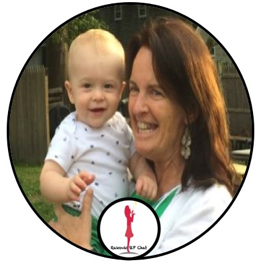 Most of us engage in conversation easily so we give no thought to the dynamics that are involved in a conversation which can make teaching the skills needed for conversation difficult. If you think of a time that you were involved in a social situation that was novel to you, perhaps a party in which you did not know many of the guests, or a new job or school, or a large convention, what were some of the things that you needed to do to engage another person? Think of all the language and interpersonal skills you needed to initiate and sustain a conversation.
Most of us engage in conversation easily so we give no thought to the dynamics that are involved in a conversation which can make teaching the skills needed for conversation difficult. If you think of a time that you were involved in a social situation that was novel to you, perhaps a party in which you did not know many of the guests, or a new job or school, or a large convention, what were some of the things that you needed to do to engage another person? Think of all the language and interpersonal skills you needed to initiate and sustain a conversation.
I typically begin teaching conversations using scripts that have both questions and comments. The child flips through the cards, which eliminates the ‘what’ to say to allow us to work on the skills of eye contact, body proximity, and wait time. I typically begin with very simple conversations on a binder ring so that they are portable and can easily be flipped through. Then as I expand this I add to the binder ring. I can also take off some of the visuals when I feel that the child has now naturally used that part of a conversation. So for example, once the child is independently greeting they don’t need those parts on their binder ring. These can be topical and easily made to respond to some of the things that are happening in the environment. For example, during the Super Bowl, I made a series of conversation cards about football. The student then had a way to respond to conversations in the lunch room and was able to initiate interactions with a topic that everyone was talking about. This is a sample of visual communication cards. Visual support cards
I love Michelle Garcia’s Add a Thought for students ready to advance to less structured, conversation.
https://www.socialthinking.com/Articles?name=Add-a-Thought-Teach-an-essential-conversation-skill
Here is another reference for the Add a Thought or Conversation Tree. 22-conversation-tree (1)-1rj6vrp
The one error that I see some beginning therapist make when using this method is that it becomes nearly like an interview rather than conversations so be careful about the number of questions versus comments. For those children that there is a major difficulty, I would suggest another visual and methodology developed by Amy Laurent.
Here is another reference from Amy Laurent that helps a student know what to say to who as they take an inventory of what a friend might light to talk about and what they like to talk about.
One of the skills that we also need to teach students is the social fillers that are so much part of everyday conversations. A graduate student I had called these comments the ‘sprinkles’ and created a conversation board that looked like ice cream scoops and not only did the student need to ask questions and comments but they needed to pick the appropriate ‘sprinkles” for some of their conversations. This then helped them to learn a variety as you can’t say ‘ that’s too bad’ when a person has just told you they won a game but the social comment ‘that’s great’ works.
There are also sometimes that you need to go with what your student’s passions are. Recently I was working with a group of seventh graders on conversation skills and we were playing a game in which you answered and asked topical questions. Part of this game was ‘earning’ bingo chips as you answered the questions and made responses. Unfortunately, the bingo chips were missing so I pulled out Bananagrams as a substitute for the chips.
My students had a different idea and one suggested that instead, they used the Bananagrams for their conversation task. Truthfully, I was not sure how this was going to work.
The reality was I needed to consider what skills I wanted to accomplish:
- Work on planning and organization: The students created the rules, set up the number of tiles and what a turn consisted of.
- Work on interactions between the students: A great deal of discussion occurred. There were negotiations, problem-solving and extended conversations.
If you look at what the board is you will see that some of the words are backward, some use letters upside down and some have inventive spelling. At first, I started to intervene but when I saw the student to student debating with good eye contact, appropriate voicing, body language and respect I sat back and allowed the conversation to unfold.
What have you found to be helpful in teaching conversations skills?



